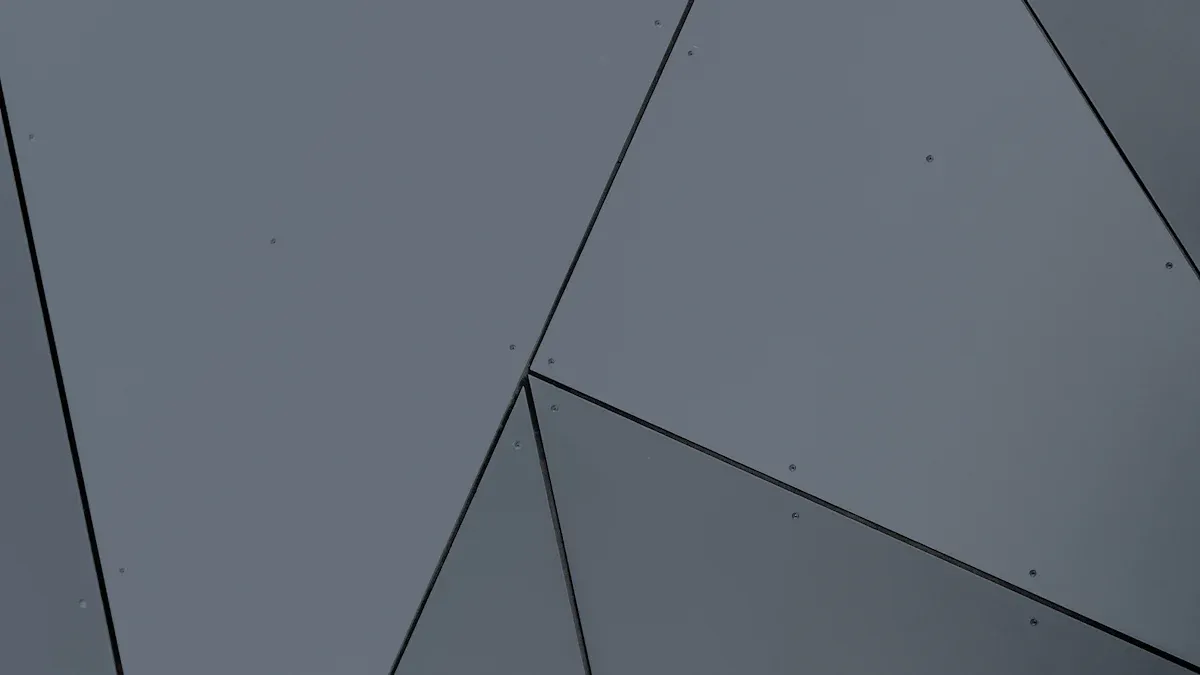
20 Jul How to Install Aluminum Composite Panel Cladding Step by Step
Table of Contents
Proper aluminium composite panel cladding installation requires careful planning and attention to detail. Start by inspecting the surface to ensure it is prepared for aluminium composite panel cladding installation. This guide walks you through each stage of the aluminium composite panel cladding installation process. Choosing aluminium composite panels for cladding enhances your building’s appearance. Accurate measurements are essential for a smooth aluminium composite panel cladding installation. Whether you’re a DIY enthusiast or a professional, you can follow this guide for step-by-step aluminium composite panel cladding installation. This method delivers a modern look and reliable safety. For the best results, follow the guide closely and use the correct techniques for aluminium composite panel cladding installation.
Key Takeaways
Clean the wall and fix any damage first. This helps the panels stick well and last longer. – Use the correct tools and materials for the job. Wear safety gear to stay safe and make the installation strong and neat. – Measure and mark the wall with care. This helps each panel fit right and stops expensive mistakes. – Put in a strong frame and a vapor barrier. These support the panels and keep water out of the building. – Seal every joint and check if the panels line up. This keeps the cladding safe from weather and looking nice.
Tools and Materials
Get your tools ready before you start your aluminum composite panel cladding project. The right tools and materials help you do a good job and make the panels last longer. Studies show that special coatings and materials make aluminum composite panels stronger, safer, and better looking. Experts say that getting ready and picking the right tools helps stop mistakes and keeps buildings safe.
Essential Tools
You need some basic tools to install the panels well. Each tool helps you make sure the panels fit and stay in place.
Measuring tape and chalk line help you mark where to put panels.
Spirit level and square help you keep lines straight.
Circular saw or panel cutter lets you cut panels neatly.
Drill and screwdriver help you fasten things together.
Rivet gun or screw gun attaches the panels.
Caulking gun puts sealant where you need it.
Clamps and suction cups help you hold panels safely.
Tip: Check your tools before you begin. Good tools make your work easier and safer.
Materials Checklist
Picking the right materials is just as important as having the right tools. New reports say that special coatings, like fire-retardant and antimicrobial finishes, are used a lot now. These coatings help keep buildings safe from fire and germs, which is important in places like hospitals and schools.
Aluminum composite panels with special coatings
Framing members made of aluminum or galvanized steel
Vapor barrier sheets
Fasteners like screws, rivets, or clips
Weather-resistant sealants
Edge trims and joint covers
Having good tools and materials helps keep people safe and makes the panels work better. Panels with UV-resistant coatings last longer and do not need much care.
Safety Gear
Safety is always the most important thing. Many experts and real events, like the Grenfell Tower fire, show how dangerous it is to skip safety steps. You should wear the right gear to keep yourself and others safe.
Safety Gear | Purpose |
|---|---|
Hard hat | Keeps your head safe from falling things |
Safety goggles | Protects your eyes from dust and dirt |
Gloves | Keeps your hands safe from sharp edges |
Ear protection | Lowers loud sounds from cutting tools |
High-visibility vest | Makes you easy to see on the site |
Respirator mask | Helps you breathe clean air |
Wearing the right safety gear helps stop injuries and keeps you following the rules. Always pay attention and follow safety steps every time you work.
Preparation
 Surface Cleaning
Surface Cleaning
First, get the wall ready for the panels. Clean the area where you will put the aluminum composite panel. Take off dust, dirt, grease, and loose stuff. Use a brush or vacuum to pick up dry dirt. For sticky spots, use soap and water. Make sure the wall is dry before you keep going. Look for cracks or broken parts. Fix any weak places so the panels have a strong base. A clean, dry, and strong wall helps the panels stick better and last longer.
Tip: Do not skip this step. If the wall is dirty or weak, the panels might fall off or look bad.
Measurement and Marking
Measuring right is very important for a good job. Use a steel ruler or tape measure for best results. These tools can measure very small amounts, so you do not make mistakes. Always check your tools before you start. Use a chalk line or marking knife to make clear lines. Try your jigs or templates on scrap pieces first. This step helps you not waste material and makes sure the panels fit well.
Use the same way to mark and label each time.
Check your measuring tools often.
Learn both ways to measure so you do not make mistakes.
Use good marking tools for better results.
When you measure and mark carefully, each aluminum composite panel fits in the right spot. This step saves you time and money later.
Layout Planning
Plan where each panel will go before you start. Draw a simple picture of the wall or space. Mark where every aluminum composite panel should be placed. This helps you see where windows, doors, and other things are. Think about how the panels will meet at corners and edges. Good planning makes the finished wall look neat and nice.
Note: Planning ahead helps you find problems early and change your plan if you need to.
Framing and Weatherproofing
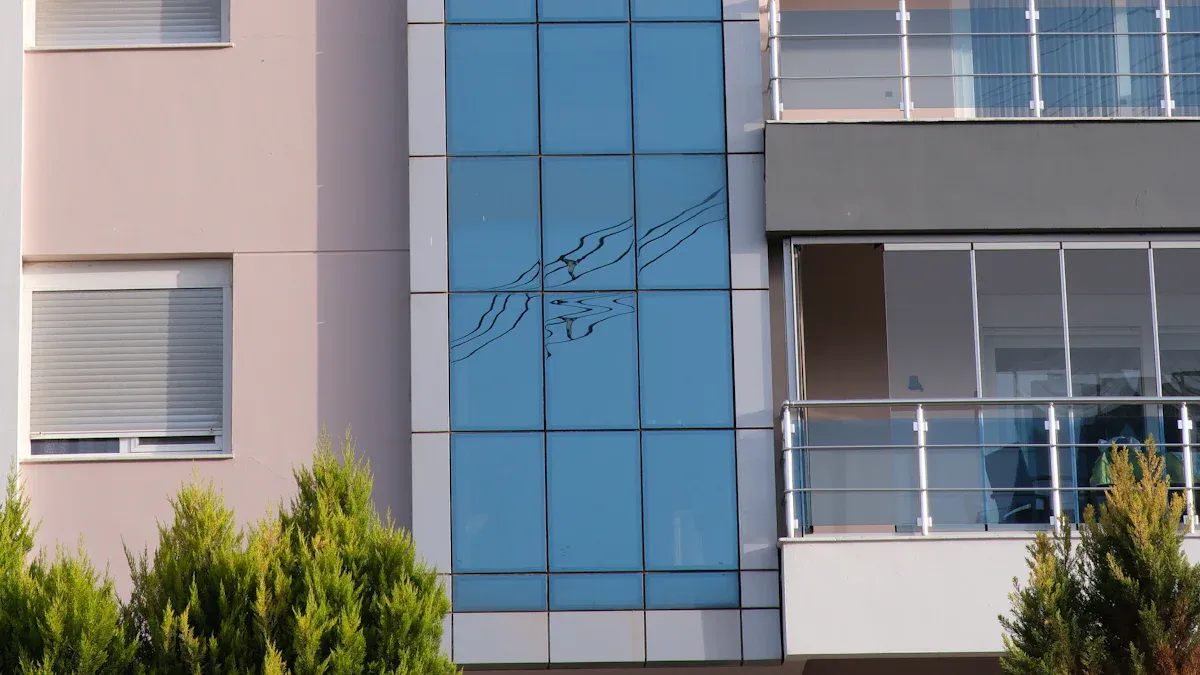
Framing Installation
You need a strong frame before you put up panels. First, set up the vertical framing members. Use wood furring strips like 1×3 or 1×4 boards. Put them 16 inches apart on the wall. This spacing gives good support for the panels. Attach the furring strips with wood screws. Place screws every 24 inches along each strip. Make sure each strip is straight and level. Use a spirit level to check as you work.
The BA-1406 Final Measure Guideline says to:
Space furring strips 16 inches apart.
Fasten with wood screws every 24 inches.
Plan the load path for wind and gravity.
Use simple details for better results.
Tip: Always check the frame is straight before you finish. A straight frame helps the panels fit and look good.
Vapor Barrier Application
After framing, you need to keep water out of the wall. Vapor barriers help stop water vapor from getting inside. Lay vapor barrier sheets over the framing. Overlap each sheet by at least 6 inches. This keeps water from getting through the seams. Secure the sheets so they do not move during panel install.
Studies show vapor barriers work best in places with condensation risk. Building codes like the IRC say use vapor barriers only when needed. Experts say to make sure the vapor barrier works with other materials, like window sealants. Some new vapor barriers have special membranes that make mounting easier and work better in different weather.
Key points for vapor barrier and waterproofing:
Overlap sheets by 6 inches or more.
Do not leave gaps or holes in the barrier.
Follow the maker’s instructions.
Pick the right type for your weather.
Note: Good waterproofing keeps your building safe for years. Always check for tears or gaps before you start putting up panels.
Panel Cutting and Fabrication
Panel Measurement
Before you start cutting and laying out acm panels, you need to measure each piece carefully. Use a tape measure or a CNC router for the most accurate results. Many professionals use laser cutting machines or shears to get exact sizes. These tools help you avoid mistakes and reduce waste. When you measure, always double-check your numbers. Even a small error can cause problems when you install the panels.
Tool | Benefit |
|---|---|
CNC Router | High precision, good for detailed work |
Laser Cutting Machine | Clean edges, less waste |
Shears | Fast and accurate for straight cuts |
You want each panel to fit perfectly. This makes the install process smoother and helps the finished wall look professional. Remember, aluminium composite panels need careful measuring to keep their flatness and avoid ripples.
Cutting Techniques
You have many ways to cut aluminium composite panels. The best method depends on your budget and the shape you need. For straight cuts, a circular saw or a jigsaw with a 24-tooth blade works well. If you want to make curves or detailed shapes, try a CNC routing machine or a laser cutter. These tools give you clean lines and help you install panels with tight joints.
Jigsaw: Good for curves and small cuts.
Circular Saw: Fast for straight lines.
CNC Router: Best for complex shapes.
Laser Cutter: High precision, no rough edges.
Shears: Quick for large, straight pieces.
Tip: Always check your tools before you start. Sharp blades and clean machines make cutting easier and safer.
Some projects use cold chisels or plasma cutters, but these need extra care. Each method has its own strengths. Choose the one that matches your project and the thickness of your aluminium composite panels.
Edge Finishing
After you cut the panels, you need to finish the edges. This step makes your install look neat and keeps the panels strong. Use a file or sandpaper to smooth rough spots. Some panels need special edging methods, like double interior or double outside edges. Start with panels a little bigger than you need, then trim them for a perfect fit.
Quality control is very important here. Check each edge for chips or cracks. Good edge finishing helps your panels last longer and look better. Many guides say you should inspect every panel before you install it. This keeps your work up to industry standards and makes sure your building stays safe and attractive.
Note: Take your time with edge finishing. A smooth edge helps seal the panel and stops water from getting in.
ACP Sheet Installation Steps
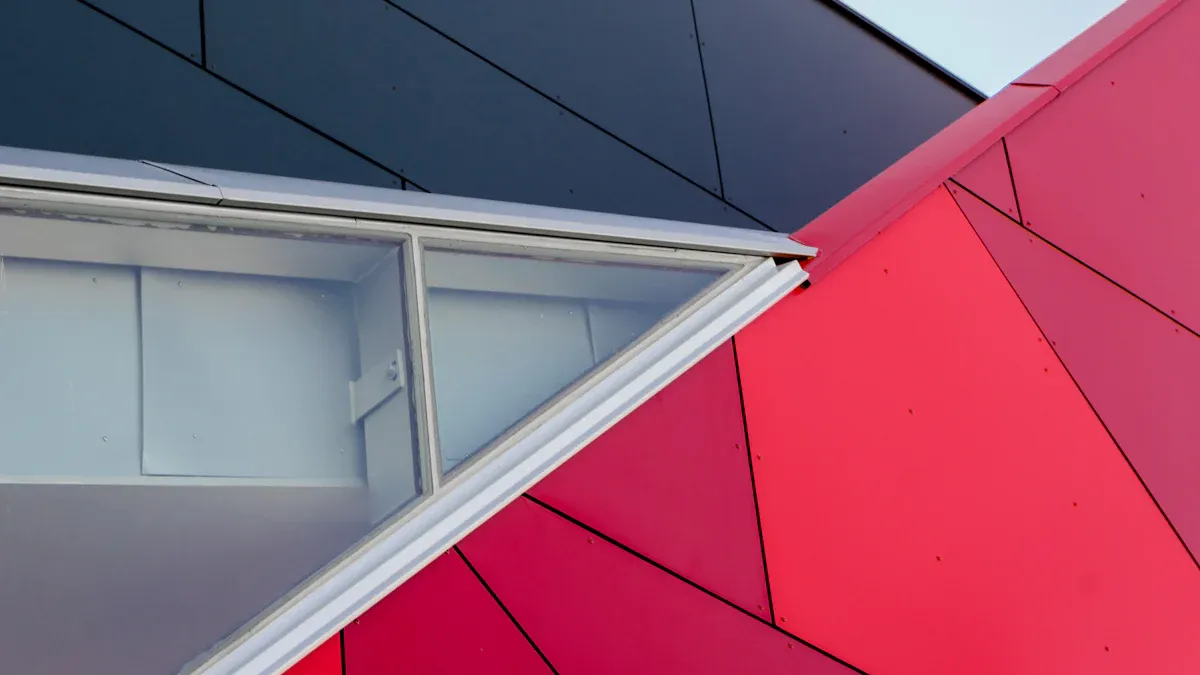
Starting Panel Placement
Always start your acp installation at a corner or where two areas meet. This helps you keep the panels straight as you work across the wall. Put the first aluminium composite panel at the bottom corner of the area. Use a spirit level to make sure the panel is straight up and down. Also, check that it is level from side to side. Attach the panel loosely at first. This way, you can move it a little if you need to fix the position.
Tip: Starting at a corner gives you a good guide. It helps you avoid gaps and makes the rest of the job easier.
Double-check your measurements before you put up each aluminium composite panel. Mark the spot for every panel so you do not make mistakes. If you are working outside, make sure the wall is clean and dry before you begin.
Fastener and Adhesive Methods
There are two main ways to attach aluminium composite panels. You can use mechanical fasteners or adhesives. Many experts say to use both together for the best results.
Stainless steel or aluminum fasteners do not rust and last longer.
Drill holes at least 2.5 times the fastener’s width from the edge. This keeps the core from breaking.
Do not make fasteners too tight. Too much pressure can bend the panels.
Advanced adhesives like 3M VHB tape, epoxy, or MS polymer make strong, flexible bonds.
Spread adhesives evenly on the back of the panel. Clean the surface first so it sticks better.
Use clamps or suction cups to hold the panel while the glue dries.
Using both adhesives and fasteners makes the panels stronger and better against weather.
Studies show that new adhesives are stronger and more flexible than old glues. These adhesives usually break inside the glue, not at the surface, so the bond is very strong. Fasteners give quick support, but adhesives help spread out the force and make the joints look smooth. Always follow the maker’s instructions for drying time and how to get the surface ready.
Panel Alignment and Spacing
Keeping panels straight and spaced right is very important. Each aluminium composite panel should be lined up and have even gaps. Use spacers or shims to set the space between panels. This space lets the panels expand and stops them from bending.
Reports say you should measure carefully and check your work often. Even small mistakes in lining up panels can cause big problems later. In car factories, workers measure the gap between panels very closely. This keeps the cladding neat and stops water or dust from getting in.
Note: Always check your lines after you put up each panel. Use a level and tape measure to keep things straight. If you see a mistake, fix it before you keep going.
Panels that are not lined up can cause problems, cost more, and need more repairs. Good alignment also makes the building look better and helps the panels last longer.
Trimming for Edges and Openings
You will need to cut aluminium composite panels to fit around windows, doors, and corners. Always cut from the back side to keep the front from getting scratched. Measure each opening before you cut. Use good tools like panel shears or a jigsaw for smooth edges.
Cut from the back to protect the panel’s finish.
Measure and mark where to cut with a pencil or chalk.
Use mounting clips or channels to hold the cut panels.
Leave a small gap at the edge for the panel to expand.
Put waterproof barriers and primers on the frame before installing panels.
Caulk around all openings to seal the edges and keep water out.
Use silicone or gutter sealant on all cut edges for extra protection.
If you need to fix a panel, cut away the damaged part and seal the new edge with waterproof tape. Fill small holes with epoxy and paint over them to keep the cladding looking nice. Do not fasten panels too tightly so they can move when the temperature changes. This step helps your acp sheet installation last longer.
Callout: Careful cutting and sealing stop leaks and keep your cladding looking good.
By following these steps, you can finish your acp sheet installation with confidence. Every part of the process, from starting the first panel to trimming the last one, is important. Careful planning, accurate work, and paying attention to details help you build a strong and good-looking cladding system for any outside wall.
Finishing and Inspection
 Sealing Joints
Sealing Joints
You need to seal every joint between panels to keep your cladding strong and weatherproof. Use a high-quality silicone or polyurethane sealant. Apply the sealant in a smooth, even bead along each joint. Press the sealant into the gap with a spatula or your finger. This step keeps water, dust, and air from getting behind the panels.
Studies show that gaps and poor sealing can weaken the joints and lower the strength of your installation. When you fill gaps well, you help the panels handle stress and last longer. Tests on aluminium joints prove that good sealing stops leaks and keeps the cladding safe for many years. If you skip this step, you risk cracks and damage over time.
Tip: Always check the sealant’s label for drying times and best use. Make sure the area is clean and dry before you start.
Final Alignment Check
After you finish sealing, check the alignment of every panel. Use a spirit level and a measuring tape. Look at the lines between panels. They should be straight and even. If you see any panels out of place, adjust them before the sealant dries.
A careful alignment check helps your installation look neat and professional. It also stops problems like water leaks or panels rubbing against each other. Many experts say that a final check can catch small mistakes before they become big issues.
Stand back and look at the whole wall.
Check corners and edges for straightness.
Make sure all fasteners are tight but not too tight.
Cleaning and Maintenance
Clean the surface of your cladding after installation. Use a soft cloth and mild soap. Do not use harsh chemicals or rough brushes. Wipe away dust, fingerprints, and any leftover sealant.
Regular cleaning keeps your cladding looking new. Inspect the joints and panels every year. Look for cracks, loose panels, or worn sealant. Fix any problems right away to keep your installation safe and strong.
Task | How Often | What to Look For |
|---|---|---|
Clean panels | Every 6 months | Dirt, stains, residue |
Inspect joints | Yearly | Cracks, gaps, leaks |
Check fasteners | Yearly | Loose or missing screws |
Note: Good maintenance helps your cladding last longer and keeps your building safe.
If you follow each step in this aluminium composite panel cladding guide, your wall will look good and stay strong. Getting ready, planning where panels go, and sealing them right help stop problems. Experts say aluminium composite panel cladding is tough, keeps out bad weather, and can be used in many ways.
Always check the wall and what is behind it.
Use the tips in this guide to attach panels safely.
For the best outcome, read the maker’s guide or talk to an expert if you are not sure.
FAQ
How do you cut aluminum composite panels safely?
Use a circular saw with a fine-tooth blade or a CNC router. Always put on safety goggles and gloves before you start. Clamp the panel tightly so it does not move. Draw your cut lines so you can see them well. Cut slowly so the edges do not chip.
Can you install aluminum composite panels over old cladding?
You can put panels over old cladding if the surface is flat, clean, and strong. Take off any loose or broken parts first. Make sure the wall is strong enough for the new panels. Always follow the maker’s rules for the best results.
What is the best way to clean aluminum composite panels?
Use a soft cloth and mild soap mixed with water. Do not use strong chemicals or rough pads. Rinse with clean water and dry with a soft towel. Clean your panels often to keep them looking new and stop stains.
Do you need to leave gaps between panels?
Yes, you must leave small gaps between panels. These gaps let the panels move when it gets hot or cold. Use spacers or shims to keep the gaps the same size. Good spacing stops the panels from bending or breaking.
How long do aluminum composite panels last?
Aluminum composite panels can last 20 years or more if you take care of them. Clean and check your panels often to help them last longer. Good panels with special coatings can handle weather, fading, and rust.



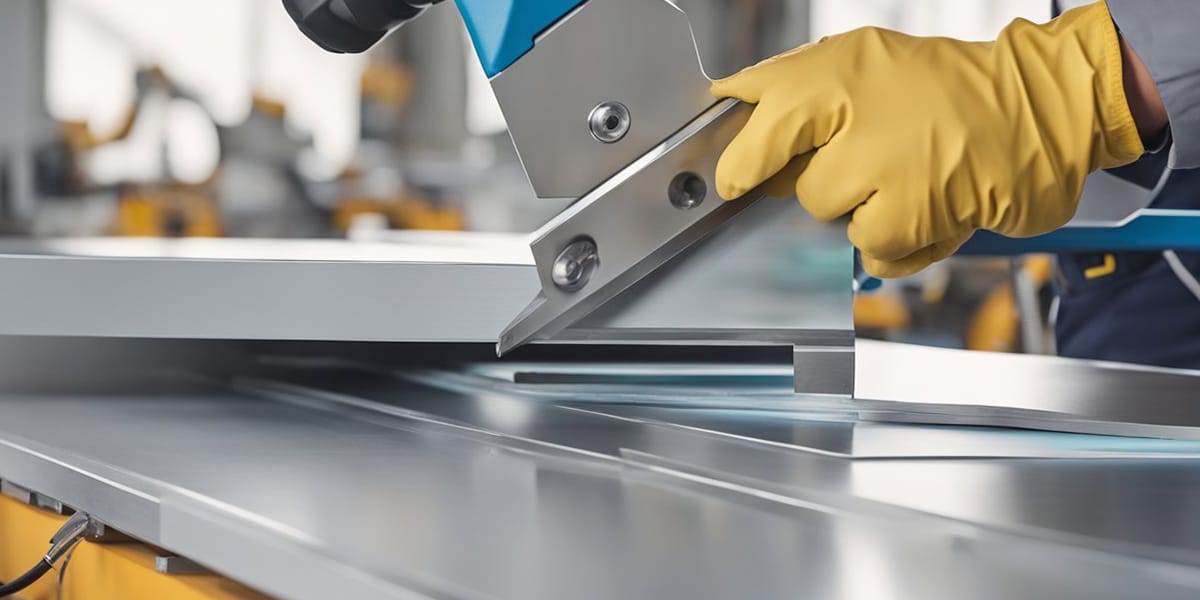 Surface Cleaning
Surface Cleaning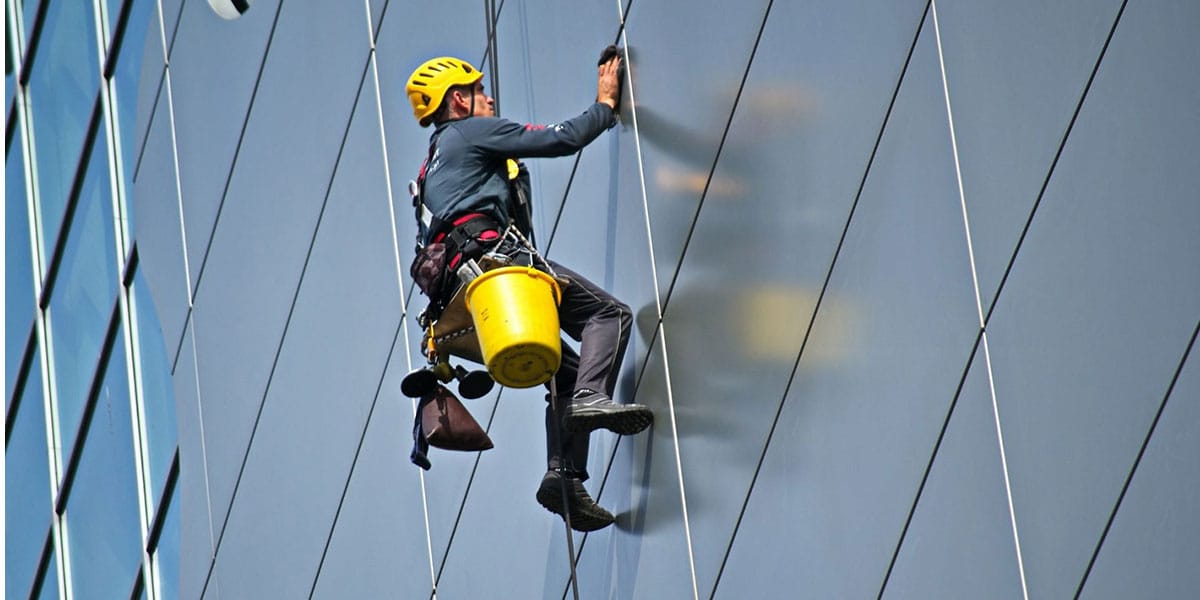 Sealing Joints
Sealing Joints